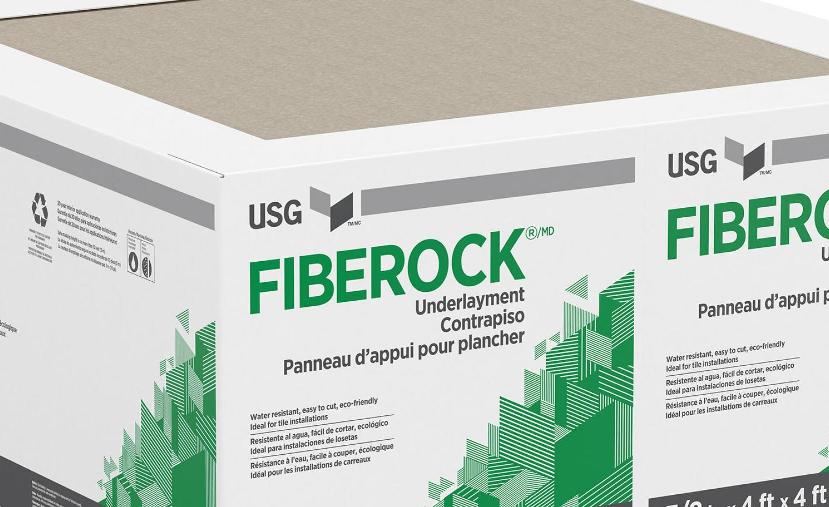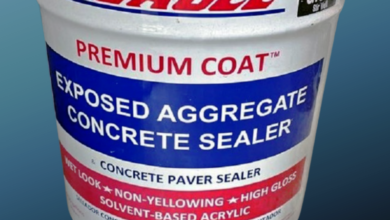Fiberock vs. Hardibacker

One of the most commonly utilized items in building projects is a backer board. It is suitable for wall, floor, and tile installations.
Backer boards are useful for ceilings and bathrooms. Cement and reinforcing fibers are just two of the materials found in backer boards.
The majority of backer boards are sturdy and a better option than drywall. You will have a variety of options if you choose to use a backer board in your construction job.
Today, we’ll be concentrating on Fiberock and HardieBacker, two well-liked backer boards. This analysis will examine the differences and similarities between the two to assist you in making a decision.
Fiberock: What Is It?
USG is one of the top manufacturers in the US construction sector, and Fiberock is one of their products. This fiber-reinforced gypsum board has outstanding water resistance and exceptional durability.
Fiberock works well in both moist and dry environments. One of the things that makes it a well-liked backer board is this:.
Fiberock is not only very robust but also quite flexible, so you can be sure that it will function well even in bathtubs and showers.
Because fiberglass is easy to cut, using it is rather simple. Fiberboard can be tiled or painted once it is installed. It should be simple to complete the latter projects using Fiberock because it produces a homogeneous surface.
Fiberock isn’t your normal gypsum board that resists moisture. USG uses a special combination of chemicals to ensure the highest level of water resistance.
This kind of backer board is resistant to deterioration even when exposed to water. It also lacks a tearing or scratchable paper face.
It will please eco-aware people to know that this backer board is composed of 95% recyclable materials. Among its most notable features is how effectively it adheres to tiles. It’s a well-liked option for both DIY and professional contractors.
Lastly, a variety of sites, including residences and commercial structures like restaurants and hospitals, can use it.
It’s crucial to understand that the Fiberock tile backer board includes an underlayment before we examine HardieBacker.
The underlayment can be used as a barrier between the unfinished subfloor and the top covering. A 20-year USG warranty is available for the Fiberock underlayment and backer board.
Describe HardieBacker.
You’ve probably heard about HardieBacker, even if building isn’t your area of expertise. The most popular backer board in the US is this James Hardie product.
In the past, groups and construction periodicals have acknowledged it. a blatant sign that the product is excellent. But what makes Hardie Backer so unique?
This cement backer board is waterproof and equipped with HydroDefense technology. This backer board’s producer claims that even after frequent exposure to a lot of water, they are confident it will maintain its shape.
When creating showers, baths, and kitchen counters, this can be quite helpful for contractors and property owners.
90% of the ingredients in HardieBacker are Portland cement and sand. It is fairly powerful and devoid of fillers. Because HardieBacker is easy to cut, installation is also rather simple.
The special formula that gives HardieBacker resistance to moisture damage is one aspect that sets it apart. In addition to the aforementioned, HardieBacker has outstanding tile adhesion.
HardieBacker is available at Lowes and Home Depot. Any local specialty tile store will also carry it. You can guarantee that there won’t be any mold growth on your walls if you use a HardieBacker board.
Furthermore, HardieBacker weighs a good bit. Its cement construction is primarily to blame for this. Never be reluctant to ask for help if you are unsure of your capacity to grip the board during installation.
HardieBacker can be installed in two different ways. Screws or nails can be used. Since the latter is considerably simpler, we like it. Use some thinset without hesitation for increased security.
Like Fiberock, HardieBacker is paintable or tileable. Even wallpaper can be applied on top of it.
What distinguishes them?
- Fiberock Mostly Contains Gypsum, and HardieBacker Is Made of Cement
The primary distinction between Fiberock and HardieBacker is that the former is made of gypsum, while the latter is made of cement.
This variation in the primary ingredients used accounts for the majority of the other variables, including weight and durability.
The Fiberock weighs less than the HardieBacker.
You will find that Fiberock is lighter than HardieBacker when you lift identical-sized Fiberock and HardieBacker boards. Because you won’t require assistance during installation, Fiberock’s lightweight feature may be helpful.
Conversely, HardieBacker may be too heavy for the typical person. Additionally, installing HardieBacker on your own could be difficult.
- Fiberock is Easier to Cut Than HardieBacker
Compared to HardieBacker, gypsum board is significantly easier to cut through due to its composition. Having worked with both, a number of installers have acknowledged that HardieBacker is more challenging to cut through.
It is evident that Fiberock is simpler to install than HardieBacker when these two distinctions are taken into account.
Why Fiberock is Not as Durable as HardieBacker
Fiberock isn’t as strong as HardieBacker, while being lighter and simpler to cut through. Cement is one of the ingredients that gives HardieBacker its exceptional strength.
You want to give HardieBacker some thought if you’re looking for a backer board that can endure over time.
- Most People Suggest Fiberock vs. HardieBacker
If you read through several internet forums or talk to experienced builders, you’ll find that most people think HardieBacker is better than Fiberock.
This is primarily because HardieBacker is more durable, making it a long-term answer for your flooring or tiling needs. Tile groups and magazines have named HardieBacker the best cement board.
What similarities are there between them?
- Both facilitate the installation of tiles.
Although there are some obvious distinctions between Fiberock and HardieBacker, they are both utilized to facilitate the installation of tiles. It’s commonly known that both brands stick to tiles nicely.
When installed appropriately, the HardieBacker or Fiberock tile should last for many years. In addition to tiles, wallpaper and paint can be applied to Fiberock and HardieBacker.
- Both boards are resistant to mold and water.
These two boards also have the trait of being mold- and moisture-resistant. Continuous exposure to moisture won’t harm HardieBacker or Fiberock, even when they’re used in showers, kitchens, or tabs.
It is impossible for these boards to expand or degrade. Most walls are frequently at risk from moisture. However, if you choose to use one of these solutions, that need not be the case.
You should be aware that although these boards are watertight, the materials that support them are not.
For example, water can seep through and harm the boards if there is wood behind them. Thus, remember to use RedGard or Kerdi to waterproof the walls.
What makes fiberglass better?
Fiberock is a preferable option due to a few factors. For example, it’s quite lightweight and simple to cut. These two advantages make installing fiberglass on your walls simpler for you.
One person can install this gypsum backer board without the need for additional assistance. This benefit is useful for do-it-yourself installers, who frequently operate alone.
The benefits of using Fiberock are greater. Both dry and moist environments can use it. It is therefore a flexible backer board. It adheres strongly to tiles as well.
But Fiberock isn’t robust. There have been several claims that it is too brittle for a backer board. You ought to exercise caution in how you approach it.
What Makes HardieBacker Better?
If HardieBacker didn’t offer a number of advantages, construction professionals wouldn’t use it as their backer board. Durability is one of the qualities that makes HardieBacker the ideal option.
You won’t ever have to be concerned about damage or deterioration when you put HardieBacker on your walls. Hardie Backer’s recipe gives it the ability to resist a wide range of pressures.
It could require more work to install than Fiberock because it might be heavier. However, once installed on your walls, it does an amazing job of adhering to paint, holding tiles, or wallpaper.
And why should someone get fiber?
These two backer boards serve the same purpose in supporting tiles, paint, and vinyl, but they differ in a few key ways that make them suitable for different uses.
For do-it-yourself property owners looking for a flexible backer board, Fiberock is the best option. Because Fiberock is simple to use, installation is a breeze.
Many do-it-yourselfers are either inexperienced or too busy to build a thick cement board that is difficult to cut. Fiberock is the better choice if you are managing everything on your own and have not hired anyone.
It has outstanding resistance against mold and water. That will significantly contribute to the longevity of your project.
And why should someone get a HardieBacker?
Professionals and anyone looking for a durable cement board can use HardieBacker. Although using HardieBacker can be difficult at times, the time and effort invested will be well worth it. If put together properly, this cement board is significantly stronger and will last for years.

